Recently the Ohana group geared up with fins and snorkels to explore one of the most fascinating places on the island, Pu’ uhonua O Honaunau (City of Refuge). The group set out to learn about tropical reef fish and remains of ancient Hawaiian culture first hand. Pu’uhonua O Honaunau was home of the ali’i (royalty) of the Kona district. This compound consisted of more than 10 buildings within the coconut palm grove. A massive stone wall was built in 1550 and still stands today, separating the royal grounds from the Pu’uhonua. Pu’uhonua was a place of refuge for defeated warriors, and for citizens who violated the Kapu (sacred laws). In 1819 Kamehameha II got rid of the traditional religious practices that took place here, destroying the huts or leaving them to their own fate. This area became a national park in 1961.
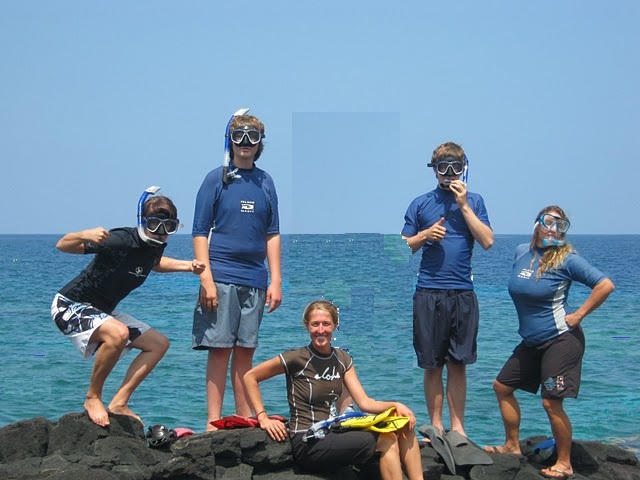
The Ohana started their day snorkeling from the royal canoe landing reserved only for the chief and his attendants. The small group geared up with snorkels, goggles, and fins and slid their way down the two natural lava steps into the crystal clear blue water (hence the nickname “two-step”). The students grazed above glowing cauliflower coral reef, saw exotic reef fish and identified sea creatures such as the dragon muray eel, humuhumunukunukuapuaa (Hawaii state fish), and the aha (needlefish). The students were excited to be able to swim through an underwater arch formed by coral and lock eyes with a honu (Hawaiian sea turtle).
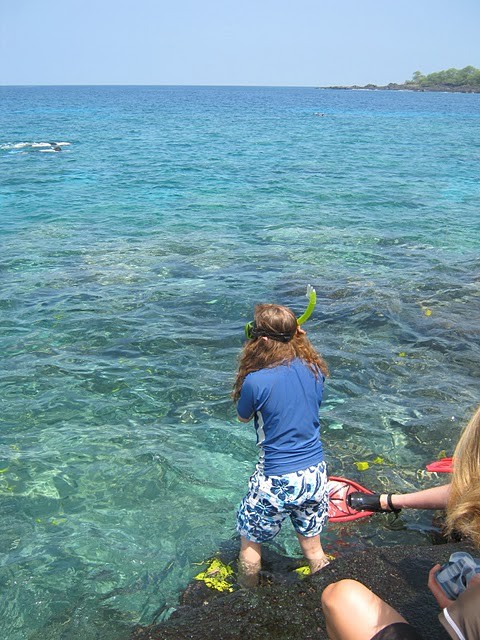
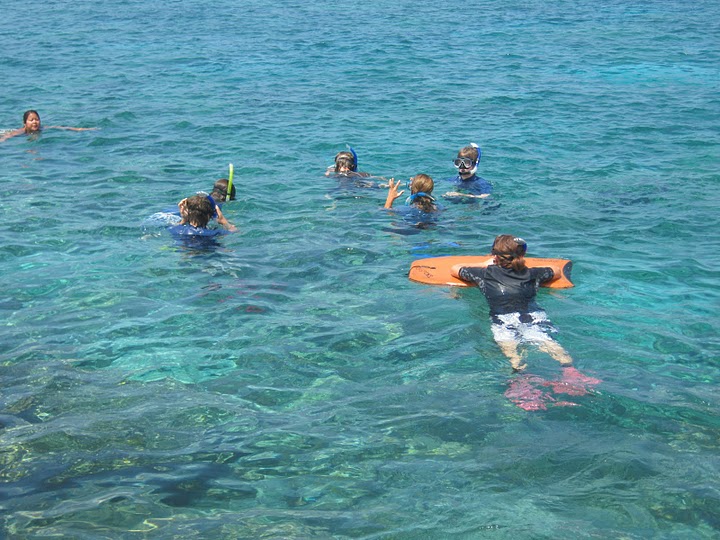
After exploring the small bay the students explored the lively tide pools that stand with warm ocean water on the smoother pahoehoe lava. Gazing into these pools they initially seem lifeless, however with close attention they came alive and students began to see the loli ( sea cucumber), opihi and small fish living in what was their small home.
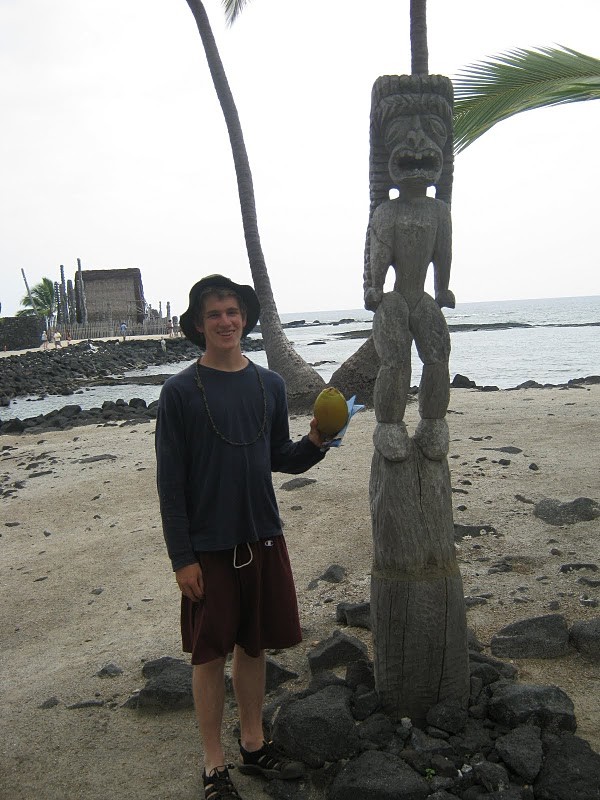
After drying off the group made their way into the Pu’uhonua O Honaunau to eat lunch. The conversation topic revolved around “If we were an explorer in this day in age what three things would we bring with us to start a new prosperous civilization?” This invoked some creative conversation! After lunch the group scouted out the old remains of the ali’i. Students were able to play konane (Hawaiian game played on a rock similar to checkers), watch a native Hawaiian weave coconut into fishing nets, and carve koa into canoe’s. It was a very packed day!
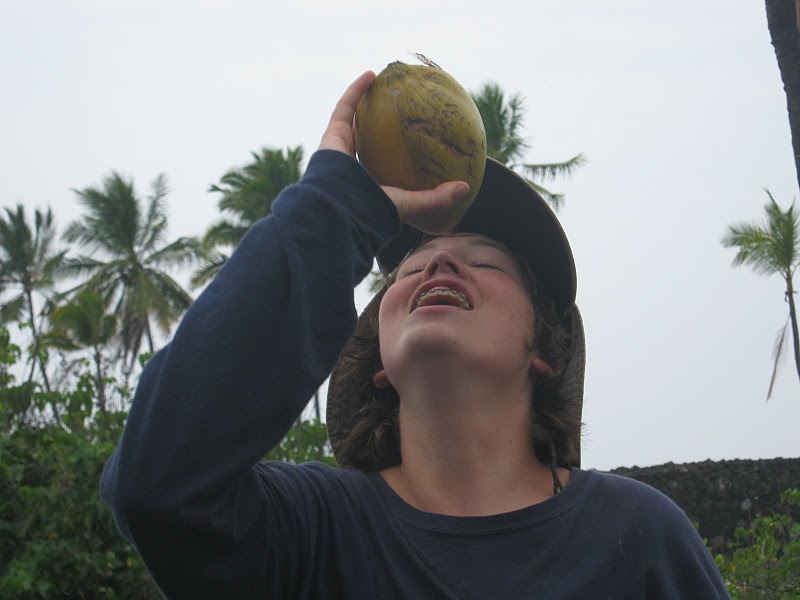
SaveSave
SaveSave
Ohana Adventures to Pu’uhonua O Honaunau and 2-step
Recently the Ohana group geared up with fins and snorkels to explore one of the most fascinating places on the island, Pu’ uhonua O Honaunau (City of Refuge). The group set out to learn about tropical reef fish and remains of ancient Hawaiian culture first hand. Pu’uhonua O Honaunau was home of the ali’i (royalty) …
Recently the Ohana group geared up with fins and snorkels to explore one of the most fascinating places on the island, Pu’ uhonua O Honaunau (City of Refuge). The group set out to learn about tropical reef fish and remains of ancient Hawaiian culture first hand. Pu’uhonua O Honaunau was home of the ali’i (royalty) of the Kona district. This compound consisted of more than 10 buildings within the coconut palm grove. A massive stone wall was built in 1550 and still stands today, separating the royal grounds from the Pu’uhonua. Pu’uhonua was a place of refuge for defeated warriors, and for citizens who violated the Kapu (sacred laws). In 1819 Kamehameha II got rid of the traditional religious practices that took place here, destroying the huts or leaving them to their own fate. This area became a national park in 1961.
The Ohana started their day snorkeling from the royal canoe landing reserved only for the chief and his attendants. The small group geared up with snorkels, goggles, and fins and slid their way down the two natural lava steps into the crystal clear blue water (hence the nickname “two-step”). The students grazed above glowing cauliflower coral reef, saw exotic reef fish and identified sea creatures such as the dragon muray eel, humuhumunukunukuapuaa (Hawaii state fish), and the aha (needlefish). The students were excited to be able to swim through an underwater arch formed by coral and lock eyes with a honu (Hawaiian sea turtle).
After exploring the small bay the students explored the lively tide pools that stand with warm ocean water on the smoother pahoehoe lava. Gazing into these pools they initially seem lifeless, however with close attention they came alive and students began to see the loli ( sea cucumber), opihi and small fish living in what was their small home.
After drying off the group made their way into the Pu’uhonua O Honaunau to eat lunch. The conversation topic revolved around “If we were an explorer in this day in age what three things would we bring with us to start a new prosperous civilization?” This invoked some creative conversation! After lunch the group scouted out the old remains of the ali’i. Students were able to play konane (Hawaiian game played on a rock similar to checkers), watch a native Hawaiian weave coconut into fishing nets, and carve koa into canoe’s. It was a very packed day!
SaveSave
SaveSave